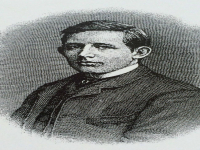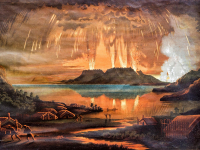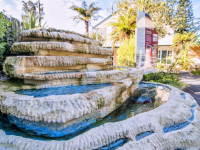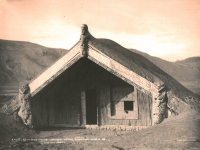See and DoMuseum of Te Wairoa
Edwin Bainbridge
Edwin Armstrong Bainbridge was the heir of Eschott Hall, Felton, Northumberland. He was born on May 5th 1866, the second son of Cuthbert Bainbridge of Newcastle-on-Tyne, who was one of the most prominent members of the Wesleyan Methodist Church.
Bainbridge came from a most unfortunate family. His parents had died when he was a child, and he had since lost a brother and sister. So it was decided he should go on a long voyage to embrace Australia, Fiji, New Zealand and the United States. The planned route was followed and Edwin Bainbridge arrived on May 24 1886 in New Zealand Auckland.
Bainbridge had long been looking forward to his trip to the New Zealand thermal region and on June 5th coached to Ohinemutu in Rotorua. On Sunday the 6th of June a party of six including Bainbridge left Rotorua for Wairoa en route for the terraces. On Monday morning Bainbridge made his way from Wairoa to Rotomahana. Bainbridge was to stay at Joseph McRae's Rotomohana Hotel where he was the only guest as it was mid winter (off season).
During his stay in Rotomahana, Bainbridge visited the Pink and White terraces with guide Sophia and went pheasant shooting with Joseph McRae the hotel owner. Bainbridge and his group were the last tourists to visit the terraces.
At around one in the morning on June 10, 1886, earthquakes began to rattle doors, shake furniture and awaken the residents at Te Wairoa. Residents observed in awe at the dense black cloud that rose above the glow, lit by a tremendous display of sheet and forked lightning, flashing above the peaks of Tarawera.
Observing the spectacle, but from a vantage point by the church, were Joseph McRae (Rotomahana Hotel owner), with 20 year old Edwin Bainbridge, his solitary guest.
From Te Mu McRae's party saw the black cloud grow brilliantly lit by the electrical discharges. A violent roaring sound recurred with detonations. It seemed as if three columns of fire were shooting skyward from the mountain. A sharp jolt threw the watchers to the ground. The stars went out as the blackness swallowed them. McRae led his party including Bainbridge back to the Rotomahana Hotel. Yet the feeling in the watchers was of awe more than fear. Tarawera was eight kilometers away, a spectacle, not a danger. But the quakes and the noise and the developing darkness provoked unease.
Then hail began. Stones struck the hotel roof. McRae thought to warm everyone with cocoa but the water would not boil on the kitchen fire. He took in whiskey and port, giving a tumblerful to all who wanted it. The group had gathered in the smoking room.
In the smoking room a single lamp lit the worried faces of those quietly assembled, Bainbridge was writing in his diary. Bainbridge finished his writing, closed his diary and proposed prayer. The group all joined in prayer for safety.
Bainbridge was not alone in thinking this was his last night on earth. The last words he wrote said ''this is the most awful moment of my life. I cannot tell when I may be called upon to meet my God. I am thankful that I find his strength sufficient for me. We are under heavy falls of volcanic...''
At 6am it was decided to evacuate the doomed hotel, and to head to the whare of Guide Sophia for shelter, but Bainbridge never made it.
Bainbridge died tragically when the veranda of the Rotomahana Hotel collapsed on him.
The grave of Edwin Bainbridge is in Kauae Cemetery, Ngongotaha, near Rotorua. Far from his home, in Newcastle, England. The obelisk memorial has a photograph of Bainbridge on the front and an inscription on the side.












Connect with Us
Facebook YouTube Instagram Tripadvisor Blog Email